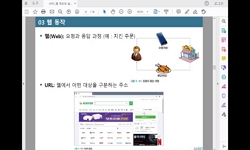Home Network System (HNS) is comprised of networked home appliances and sensors to provide value-added and more powerful services. In order to build high- level HNS service by integrating multiple appliances and sensors, our earlier study proposes a...
http://chineseinput.net/에서 pinyin(병음)방식으로 중국어를 변환할 수 있습니다.
변환된 중국어를 복사하여 사용하시면 됩니다.
- 中文 을 입력하시려면 zhongwen을 입력하시고 space를누르시면됩니다.
- 北京 을 입력하시려면 beijing을 입력하시고 space를 누르시면 됩니다.
The Improvement and Evaluation of the Implementation Ability for Deriving Timing Constraints Context in Service-Oriented Home Network
한글로보기https://www.riss.kr/link?id=A101831552
- 저자
- 발행기관
- 학술지명
- 권호사항
-
발행연도
2015
-
작성언어
English
- 주제어
-
자료형태
학술저널
-
수록면
233-244(12쪽)
- 제공처
-
중단사유
※ eArticle의 서비스 중단으로 원문이 제공되지 않습니다.
-
0
상세조회 -
0
다운로드
부가정보
다국어 초록 (Multilingual Abstract)
Home Network System (HNS) is comprised of networked home appliances and sensors to provide value-added and more powerful services. In order to build high- level HNS service by integrating multiple appliances and sensors, our earlier study proposes a method to derive timing constraints context based on Sensor Service Framework (SSF, which deploys sensor devices as web services to achieve easy development of context-aware application). That method divides timing constraints into two types: the sequential timing constraint and the continuous timing constraint. A high-level context can be defined as conditions expression based on the above two types. Moreover, we present a timer service to implement timing constraints context within SSF, and demonstrate how a high-level context with timing constraint is registered and detected in a real home network system. However, to create high-level context with timing constraints, the developer needs to know the details about pre-existing context of HNS, and also needs the ability to analyze and implement complex logic to detect a high-level timing constraints context. This limitation impedes the efficient creation of high-level context in HNS. Therefore, we propose a method to collectively manage the information of a pre- existing context of HNS in this paper, by which the developer can create high-level timing constraints context more easily than before. As a case study, we implement Enter-Leave context and TV Left On context, and execute an evaluation to prove the effectiveness of this proposal.
목차 (Table of Contents)
- Abstract
- 1. Introduction
- 2. Preliminaries
- 2.1 Home Network System (HNS)
- 2.2 Sensor Service Framework (SSF)
- Abstract
- 1. Introduction
- 2. Preliminaries
- 2.1 Home Network System (HNS)
- 2.2 Sensor Service Framework (SSF)
- 2.3 Timing Constraints Context
- 3. Research Goal and Approach
- 3.1 Issues
- 3.2 Key Idea
- 3.3 ContextRegistry Service
- 3.4 TimingContextSensor Service
- 4. Case Study
- 4.1 Automatic Light Service (Using Sequential Timing Constrains Context)
- 4.2 TV LeftOn Notification Service (Using Continuous Timing Constrains Context)
- 5. Evaluation
- 5.1 Evaluation Method and Environment
- 5.2 Evaluation Result
- 6. Conclusions and Future Work
- 6.1 Conclusions
- 6.2 Future Work
- References
동일학술지(권/호) 다른 논문
-
- 보안공학연구지원센터
- Oyebola B. O.
- 2015
-
The Multi-channel Embedded Video Surveillance Alarm System
- 보안공학연구지원센터
- Chen Guolong
- 2015
-
- 보안공학연구지원센터
- Limei Zhang
- 2015
-
Global Anomaly Crowd Behavior Detection Using Crowd Behavior Feature Vector
- 보안공학연구지원센터
- Yong Yin
- 2015




 eArticle
eArticle






